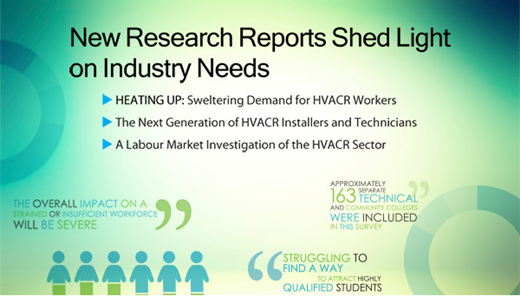
New reports estimate 115,000 HVACR technicians will be needed by 2022 to fill jobs due to anticipated growth in the industry and retirements, yet only 21,000 students graduated from post-secondary HVACR programs in 2015. Without a concerted effort from HVACR employees, manufacturers, engineers, distributers and other related employers the demand for these high-skills jobs will outpace the supply. This gap could leave homeowners, hospitals, schools, virtually any building with heating, air conditioning, hot water or refrigeration out cold for installation, maintenance or retrofitting.
In 2014, there were 220,734 job opening in the entire HVACR sector in the U.S, which encompasses jobs requiring anywhere from diplomas, certificates, or associate/baccalaureate degrees. The majority of these jobs are middle skill positions, such as installation, maintenance and repair of HVACR equipment (over104,000); jobs that cannot be off shored, offer a competitive salary with a strong path to career advancement, such as owning the business. Compare this to the Bureau of Labor Statistics, which states there are a total 267,000 HVACR mechanic and installer jobs in the U.S. This suggests the need is even great than their stated projections.
In 2015, the HVACR Workforce Development Foundation commissioned three reports asking “What is the cause of the talent gap and what can we do to close it?” To help answer these questions, the Foundation commissioned three studies to explore workforce supply and demand in the United States and Canada. The goal was to understand the opportunities available for HVACR workers and address the unique issues constraining the pipeline of talent for HVACR roles.
- HVACR jobs are available and they are everywhere.
- HVACR jobs provide good salaries for a good quality of life.
- HVACR jobs are available for a diverse level of skill sets.
Yet, there are too many empty seats in HVACR classrooms, community and vocational colleges are not training enough students, there is no clear credentialing or accreditation programs, schools are losing half of their instructors to retirement, incoming student are unprepared for the program, recruitment practices are lacking, and more women and minorities are needed in the profession.
Read the executive summary and reports, including the suggested North American Plan, which focuses on three board goals for the industry: training the trainers, establishing uniform accreditation and certification programs, and attracting a motivated workforce.





















